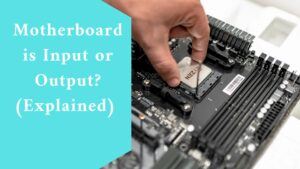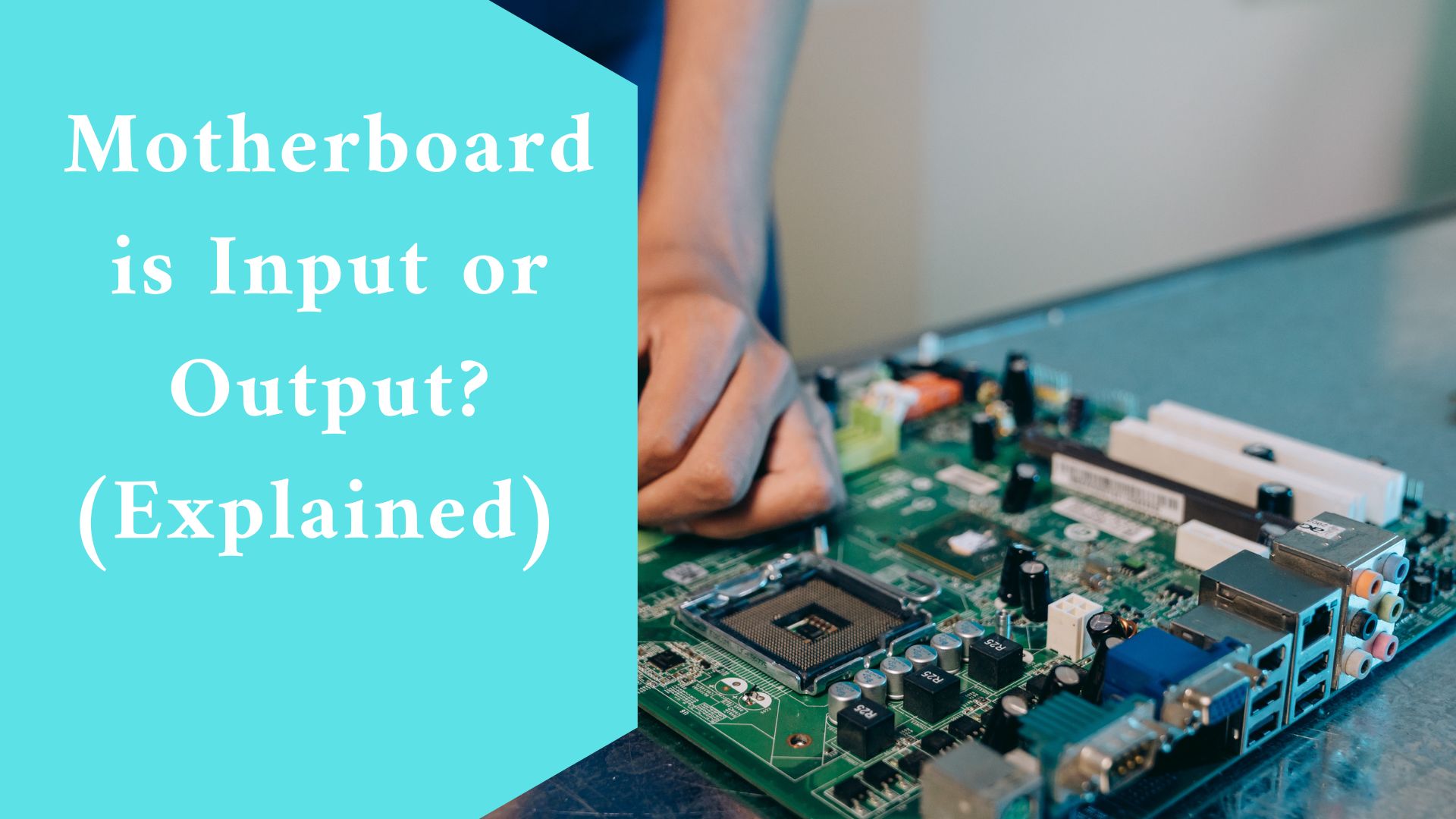A motherboard is a printed circuit board that links all of the components of your computer. It is not an input or output device. It enables the many components of your gadget to communicate with one another.
A motherboard is an important piece of equipment to comprehend because it is one of the most critical components of a computer.
Communication between different elements of your computer would be impossible without it.
A motherboard is a printed circuit board that links all of the components of your computer. It is not an input or output device.
It enables the many components of your gadget to communicate with one another. The motherboard sends and receives data, however it is not considered an input or output device in the context of computer devices.
Let’s examine more closely what a motherboard is and why it isn’t an input or output device.
What exactly is a motherboard?
In computers and other electrical devices, the motherboard is the main printed circuit board (PCB).
It enables the communication between many components and devices, including the central processor unit (CPU), memory (hard drive and RAM), and video card.
The motherboard serves as the foundation of your computer and has ports for devices such as USB flash drives and CD/DVD drives.
Motherboards are designed specifically for various processors. It means you can’t swap them out for various brands without first confirming compatibility, or you’ll get the blue screen of death when you boot up your computer. Memory components, on the other hand, such as computer hard drives and RAM, are often compatible with all motherboards.
Your motherboard’s base is a stiff non-conductive substance, such as plastic, with a layer of traces printed onto the sheet. These tiny traces are constructed of a conductive substance like copper or aluminum and serve to connect the various components.
A motherboard’s primary functions are as follows:
- Connect the CPU, RAM, discs, sound card, graphics card, and any additional ports or expansion cards.
- Allow other devices to connect and interact with one another Power the various units
- Serve as a hub for components to send and receive data via the motherboard.
Related video here ????????????
Is the motherboard input or output?
A motherboard is the central printed circuit board that allows all other components of a computer to connect.
It is not an input, or output device in computing terms. The motherboard connects all of your computer’s components. The CPU, RAM, graphics, and sound cards, as well as several other drivers, are all connected to the motherboard.
The motherboard allows information and power to transfer to the various aspects of your devices, facilitating connectivity.
It communicates between devices by using conductive aluminum or copper traces. Memory and graphics cards can also be plugged into other ports.
The motherboard is made up of many input and output components. Temperature and power sensors are examples of input devices, while components that control the clock speed are examples of output devices. There are also input/output components that can be read and set, such as the real-time clock.
The motherboard allows communication by allowing information and electricity to transfer to the various aspects of your devices. It communicates between devices using conductive aluminum or copper traces. Memory and graphics cards can also be plugged into different ports.
The motherboard is comprised of several input and output components. Temperature and power sensors are examples of input devices, whereas components that affect the clock speed are examples of output devices. Input/output components such as the real-time clock can also be read and set.
The motherboard is input and output devices
The motherboard stores the most crucial components of your favorite devices, and they would not function without it.
Input, output, memory, and processing devices are examples of motherboard components. It allows information input and output, but it is not an input or output device in and of itself.
A typical input device, such as a scanner, is connected to the motherboard through external connectors.
The same can be said for output devices such as speakers. These two components do not have direct communication. Instead, the input component sends data to the CPU, which processes it before sending it to the output component.
The CPU will also manage data transmission and retrieval from memory. The motherboard is necessary with all of these input and output devices since it is the narrow conductive traces that carry all of the information.

Is a motherboard a storage device?
A motherboard is the main circuit board of a computer that allows all of the other components to communicate and function properly.
The motherboard serves as the chassis and engine of an electronic gadget, while the CPU serves as the operation’s brain.
Although hard drives and random access memory (RAM) are plugged into the motherboard, it is not a storage device.
A motherboard is not a storage device; it is the main circuit board of a computer that allows all of the other components to communicate and function properly.
The motherboard is the chassis and engine of an electronic gadget, whereas the CPU is the operation’s brain.
Hard drives and random access memory (RAM) are plugged into the motherboard, however, this does not constitute a storage device.
Storage devices are generally compatible with all computers. Changing a hard disc or RAM from one machine to another is usually straightforward.
In contrast, motherboards are intended to work with specific processors and include sound and graphics cards. Your computer will crash if you use the wrong processor with the wrong motherboard.
Final thought
Is a motherboard an input or output device? As we have seen in our post today, a motherboard is the central printed circuit board that allows all other components of a computer to connect.
It is not an input, or output device in computing terms. The motherboard connects all of your computer’s components.
The CPU, RAM, graphics, and sound cards, as well as several other drivers, are all connected to the motherboard.
We hope that this guide was helpful to you. Thanks for reading and please consider leaving a comment in the comment section below.

